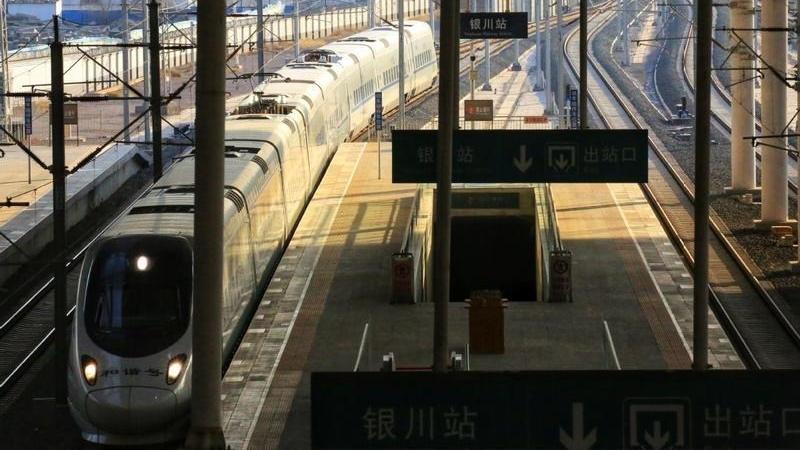 In this Dec 25, 2020 photo, a high-speed train enters Yinchuan station in Ningxia Hui autonomous region during a trial. (DING BANNONG / FOR CHINADAILY.COM.CN)
In this Dec 25, 2020 photo, a high-speed train enters Yinchuan station in Ningxia Hui autonomous region during a trial. (DING BANNONG / FOR CHINADAILY.COM.CN)
China's transport regulators introduced the prospects of a nearly 700,000-kilometer network on Monday as they rolled out a comprehensive transport blueprint.
"The network, which will connect all county-level administrative regions, borders, major facilities and tourism spots, will be comprised of roads, railways, air routes and waterways," Transport Minister Li Xiaopeng told a news conference.
According to the blueprint, the network will be convenient, cost-effective, green, intelligent and safe.
Li said the guideline is China's first mid-to-long-term comprehensive transport plan and maps out the country's transport prospects to 2035.
By 2035, main corridors and passages will be built as the skeleton of China's transport network. A total of 100 transport hub cities will be established
By 2035, main corridors and passages will be built as the skeleton of China's transport network. A total of 100 transport hub cities will be established.
ALSO READ: China sets guidelines for comprehensive transport network
All kinds of integrated development will be promoted, such as the development of tourism, transport and logistics, transport infrastructure and information networks, as well as coordinated development of transportation in different regions.
Wang Zhiqing, vice-minister of transport, said China will have a network of 160,000 km of expressways, with seven main ones from Beijing, 11 north-south ones and 18 east-west ones. The network of national highways will reach 300,000 km, and the road network will link all county-level regions and areas with more than 100,000 people.
China's water network will comprise four north-south and four east-west lines with 25,000 km of waterways, as well as 63 major ports. The network will carry more than 90 percent of major export freight transported by water.
Ma Junsheng, director of the State Post Bureau of China, said 80 logistics hubs will be established to handle international and domestic express deliveries and mail.
Liu Zhenfang, director of the National Railway Administration of China, said China will build a 200,000-km railway network, including 70,000 km of high-speed railways-up from about 38,000 km at present. Major railway infrastructure projects will be built to boost the development of China's western region, such as a Sichuan-Tibet railway and a railway corridor connecting inland areas in southwestern and southern China.
READ MORE: Nation ready for transport expansion
Dong Zhiyi, deputy director of the Civil Aviation Administration of China, said 400 airports will be built in the coming years.
No schedule for Boeing 737 Max to return
China’s civil aviation regulator reiterated on Monday that it will not set a date for the Boeing 737 Max to fly again in the country until all safety concerns have been answered and solved.
In November, the United States’ Federal Aviation Administration cleared the jet for flights after nearly two years of being grounded following two crashes that killed 346 people.
China, with a fleet of 97 Boeing 737 Max jets, grounded the planes on March 11, 2019, becoming the first country to do so after the crashes.
Dong Zhiyi, deputy director of the Civil Aviation Administration of China, restated three conditions for the planes to be put back in service in China: updated designs must pass air worthiness inspection; pilots must receive adequate training; and the cause of the crashes must be clear and modifications made must prove effective.


